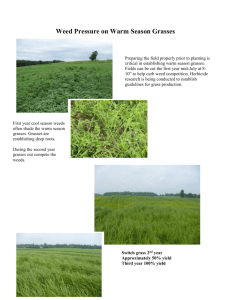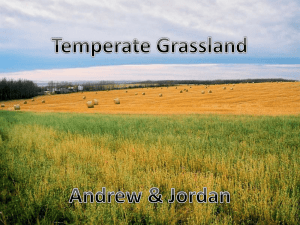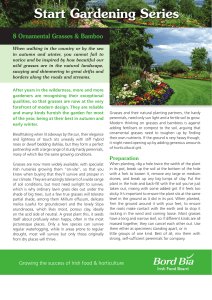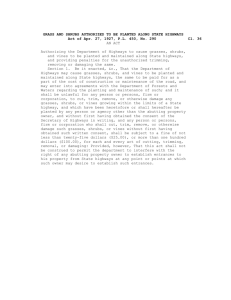Connin_et_al
advertisement
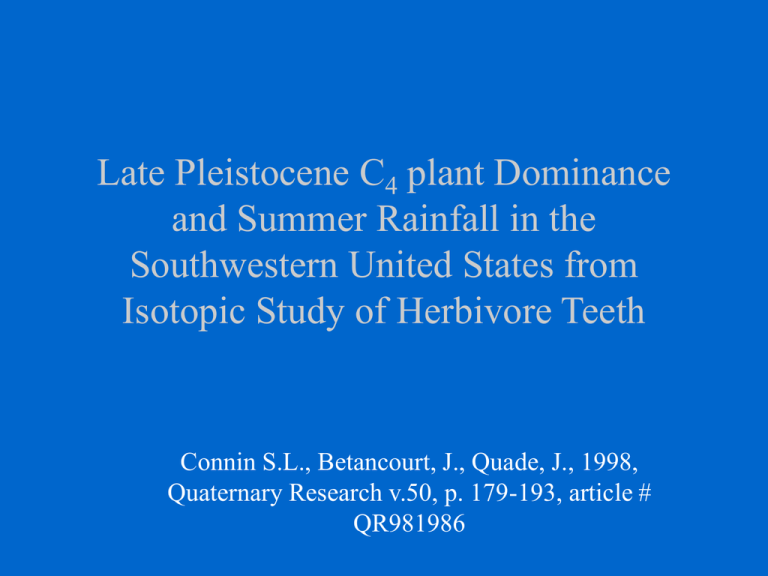
Late Pleistocene C4 plant Dominance and Summer Rainfall in the Southwestern United States from Isotopic Study of Herbivore Teeth Connin S.L., Betancourt, J., Quade, J., 1998, Quaternary Research v.50, p. 179-193, article # QR981986 Difference between C3 and C4 plants Temperate Environment Arid Environment Plant types are an environmental indicator • C4 plants: desert grasses, some herbs and shrubs – dominate region after 18,000 BP • C3 plants: dicotelydenous plants and temperate grasses • dominate the region during the late Pleistocene Current distribution of C4 plants Carbon Isotopes in Plants • Different plants incorporate different types of carbon in their structure • Megaherbivores eat the plants, and incorporate the carbon in their structure C and O Isotopes in tooth Enamel • C 13 values in tooth enamel correlate to bulk diet • C 13 values differ for C4 and C3 plants • C4 ( 12%,) C3 ( -26%) • O 18 in enamel relates to drinking water and plant water Location Map Megaherbivores Musk Ox and Bison Megaherbivores Equus Megaherbivores Woolly Mammoth Megaherbivores Giant Ground Sloth Assumptions • 1) Physiology of modern and glacial C3 and C4 grasses is similar • 2) C4 diets largely reflect the consumption of grasses • 3) Enamel C13 values provide an accurate record of C4 plants on local landscape Validity of assumptions • 1) Difficult to test but likely sound • 2) Supported by spatial variations of grasses but is best seen in Mammuthus spp. and Bison spp. • 3) Overlooks possibility of migratory behavior Abundance of C4 and C3 grasses and shrubs Isolines indicate annual proportion of rainfall in summer months Mostly C3 Mostly C4 Comparison of past and present conditions Climatic Implications • Proximity of glaciers caused a shift in the jet stream • This shift changed rainfall patterns, favoring the growth of more C4 plants • Most of the rainfall in summer • A tropical or sub-tropical source of Summer precipitation Climatic Comparison: Pleistocene vs. Present Comparison of Isotope studies Conclusions • C13 values increased with decreasing latitude • More work needed, as this is the first study of this kind • A weak sub-tropical high produced low cutoff pressure cells that steered rain patterns over the Southwest • Tropical or sub tropical rainfall patterns in the Southwest during the Pleistocene


